Povoação sits in the cradle of São Miguel’s southeast coast, where steep cliffs meet the Atlantic in a quiet curve. This was the first place settled on the island—early 15th-century arrivals drawn by rivers, fertile slopes, and the shelter offered by a natural amphitheater of hills.
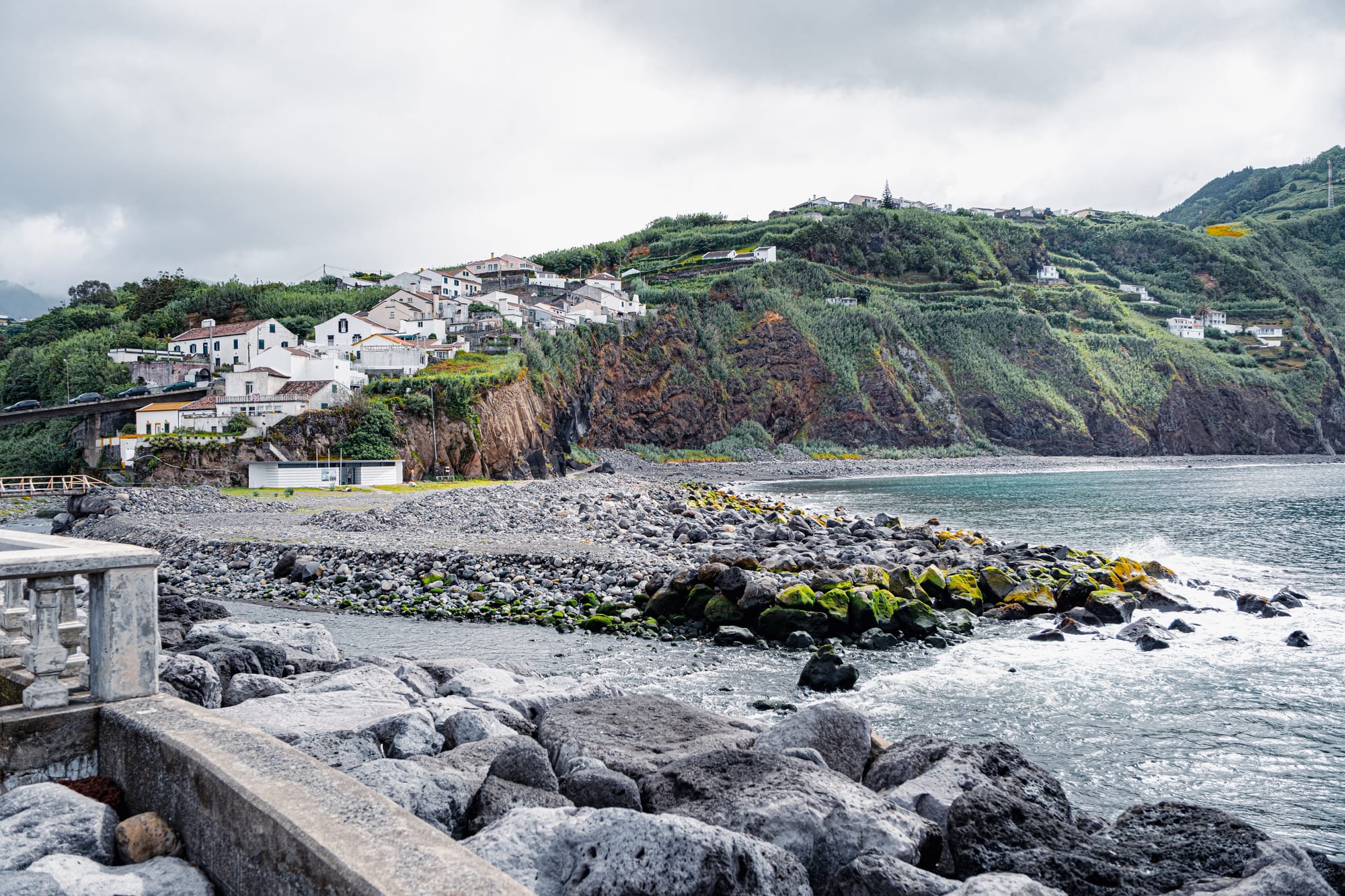
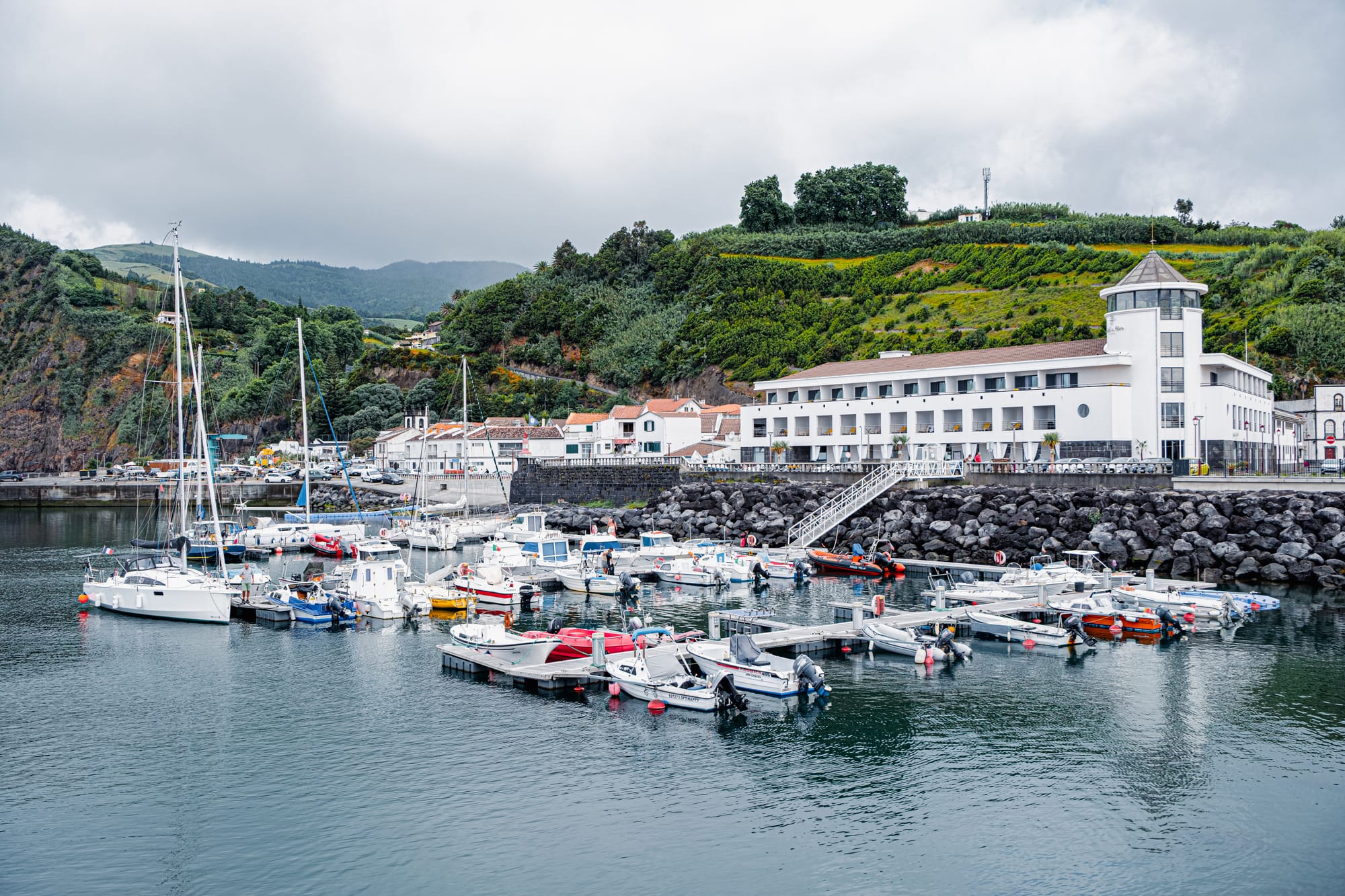
From basalt shorelines to a working marina, Povoação traces the edge of São Miguel with quiet continuity
It remains shaped by that first arrival: defined by function rather than display, rhythm rather than rush. For travelers seeking an different kind of destination in the Azores, Povoação offers a quiet and deeply local perspective.
A town shaped by sea and slope
The town spreads across seven hills, with whitewashed homes climbing up and around the terrain. Down by the water, the port is the town’s anchor—practical, worn, and in use. There are rusted ship propellers and anchors tucked into the basalt, not placed for effect but because that’s where they’ve landed.
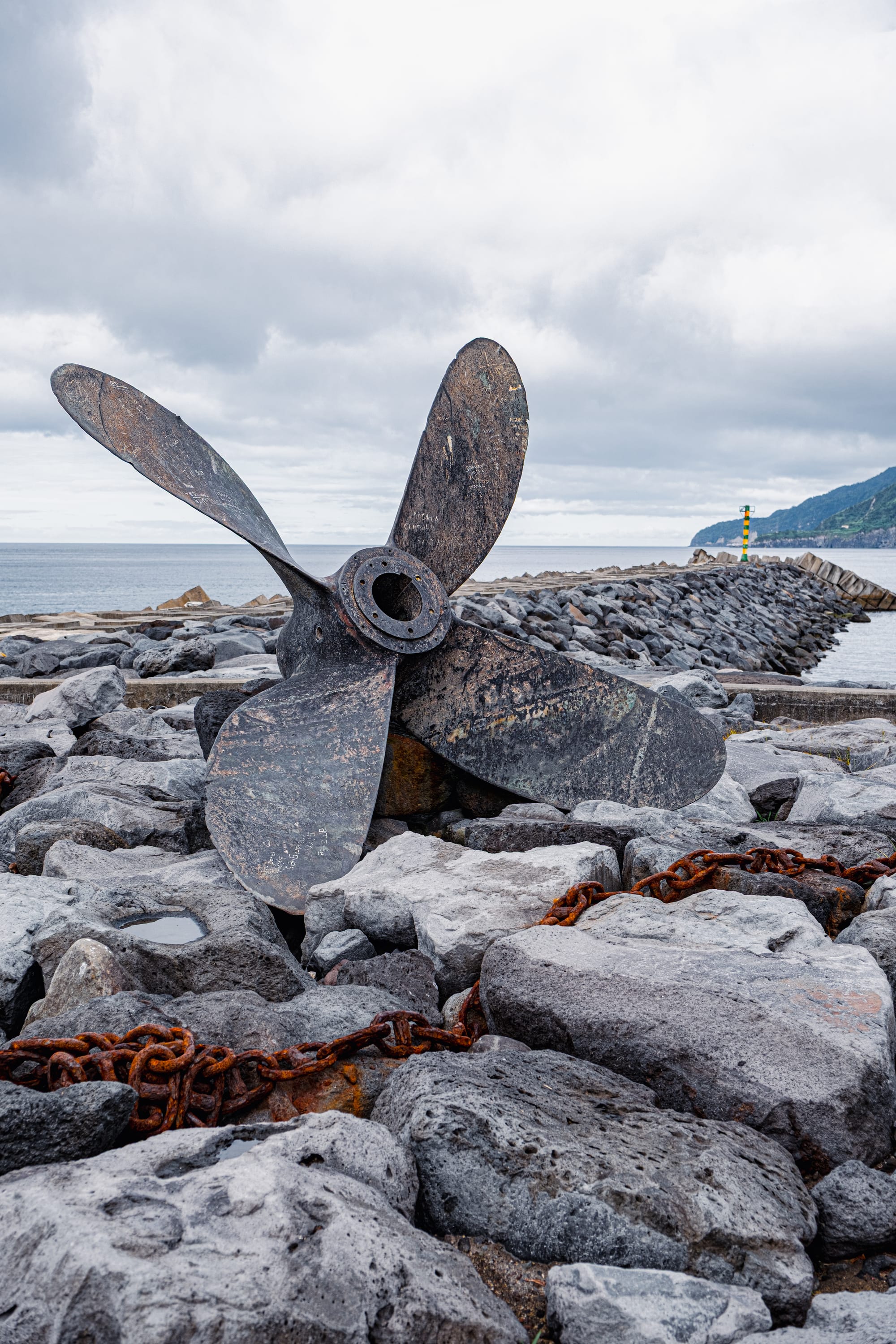
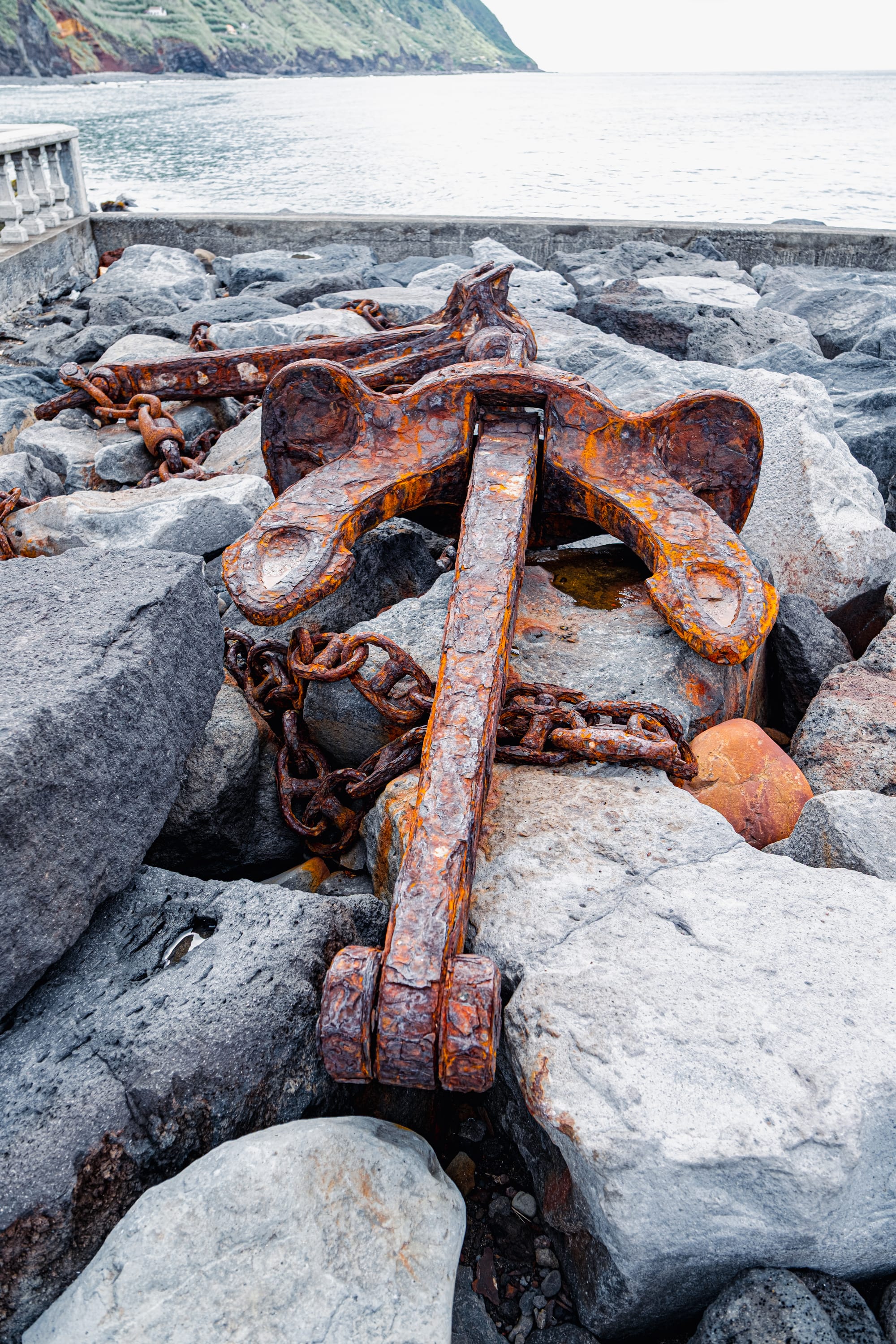
Maritime remnants rest where they landed—rusted anchors and propellers folded into Povoação’s working shore
A wooden footbridge crosses a stone-littered outflow toward the ocean. You walk over rounded volcanic rocks, past seawalls and concrete breakers designed to hold the Atlantic back just enough.
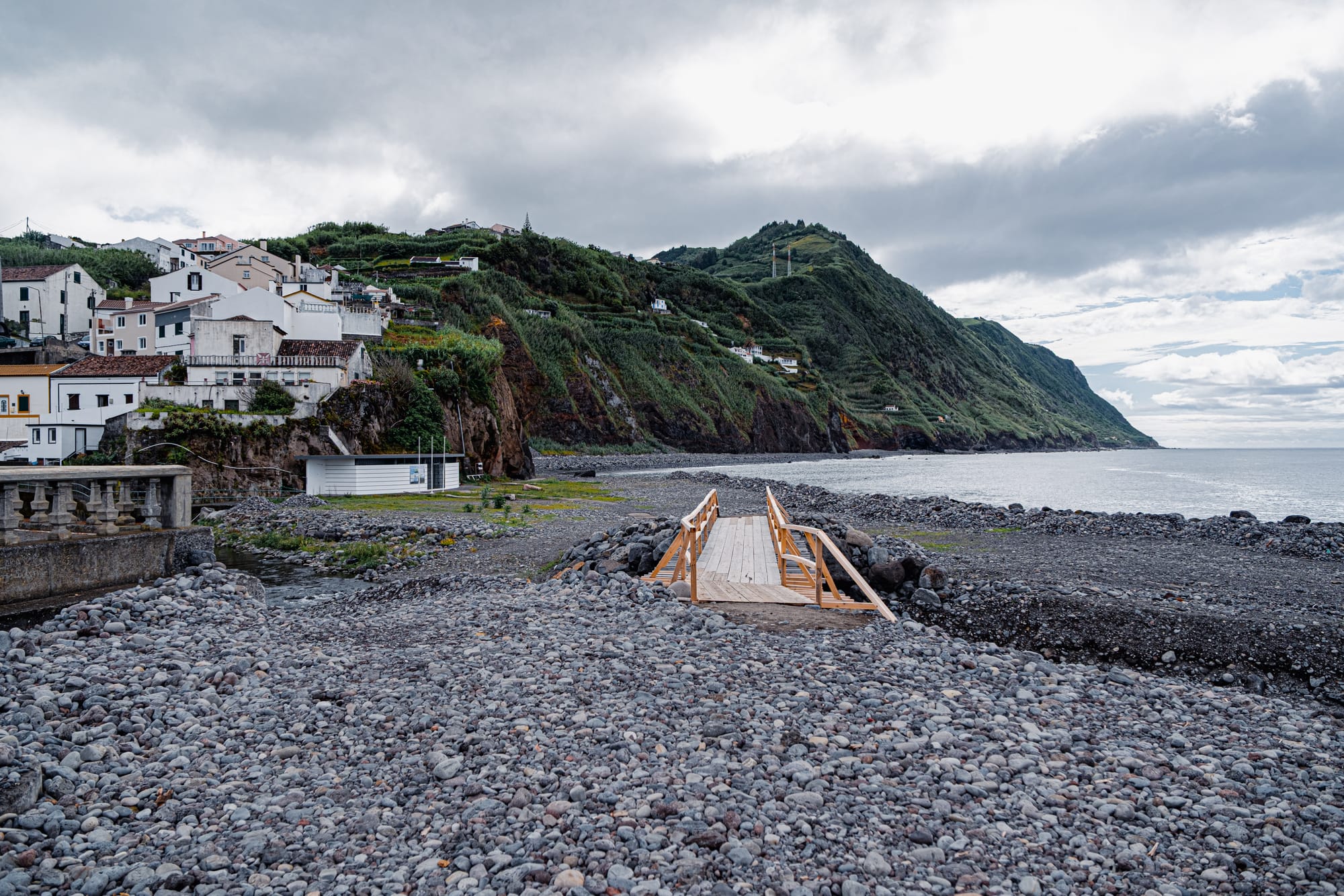
This is a town where people live and work. It's not curated for tourism. It’s a port town with ship hardware on the rocks, residential streets that curve with the hillside, and a pace that moves with weather, errands, church bells, and tide.
Swimming beside the Atlantic
A public pool edges against the sea, built from poured concrete and lined with simple fencing. It’s used daily, mostly by locals—kids splashing at the shallow end, older swimmers tracing steady lines.
The water is clear and still, the ocean just beyond is not. Even in overcast weather, you’ll find people swimming. The contrast between pool and sea is subtle but real. Stillness and saltwater surge, separated by a single wall.
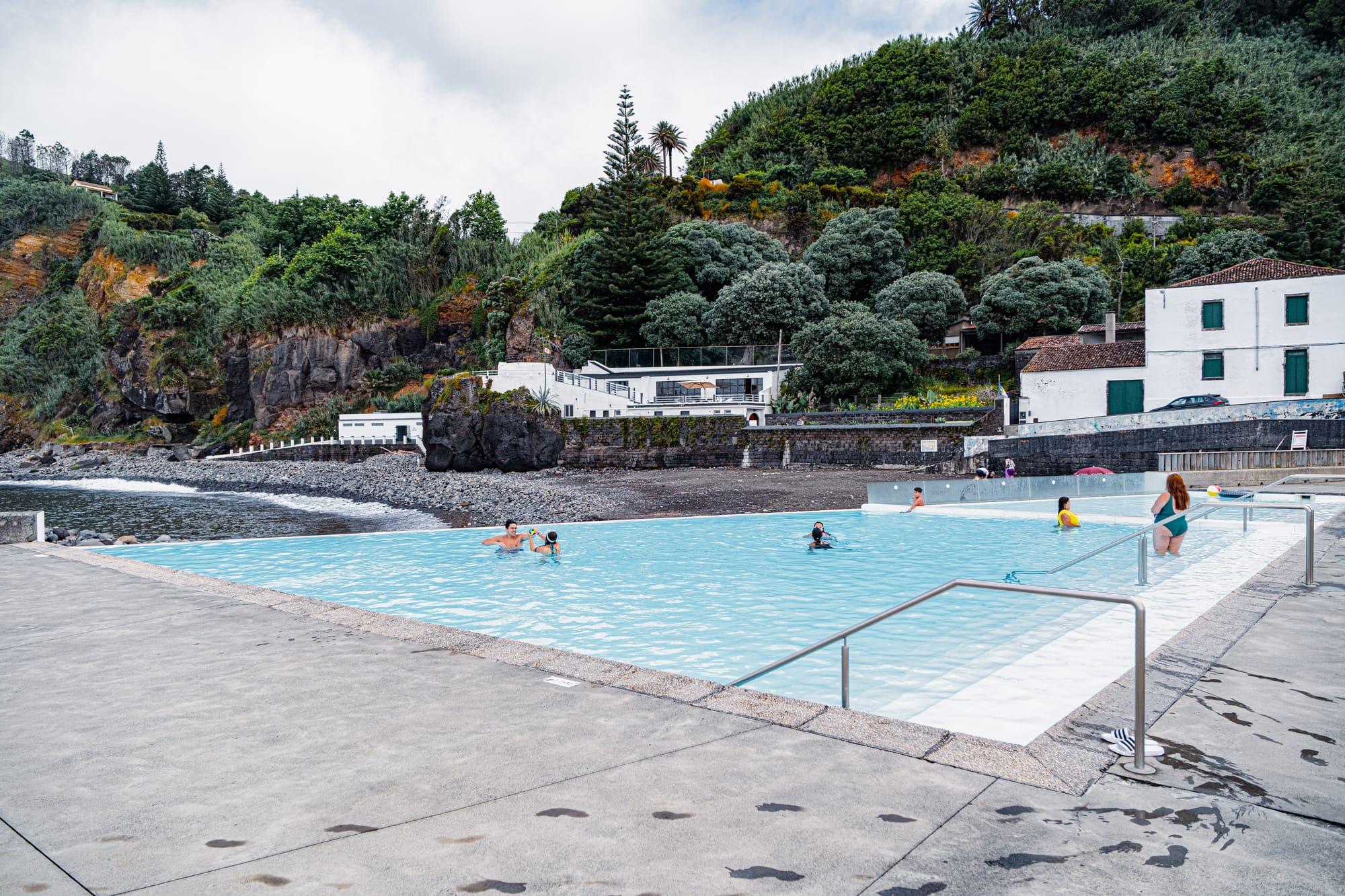
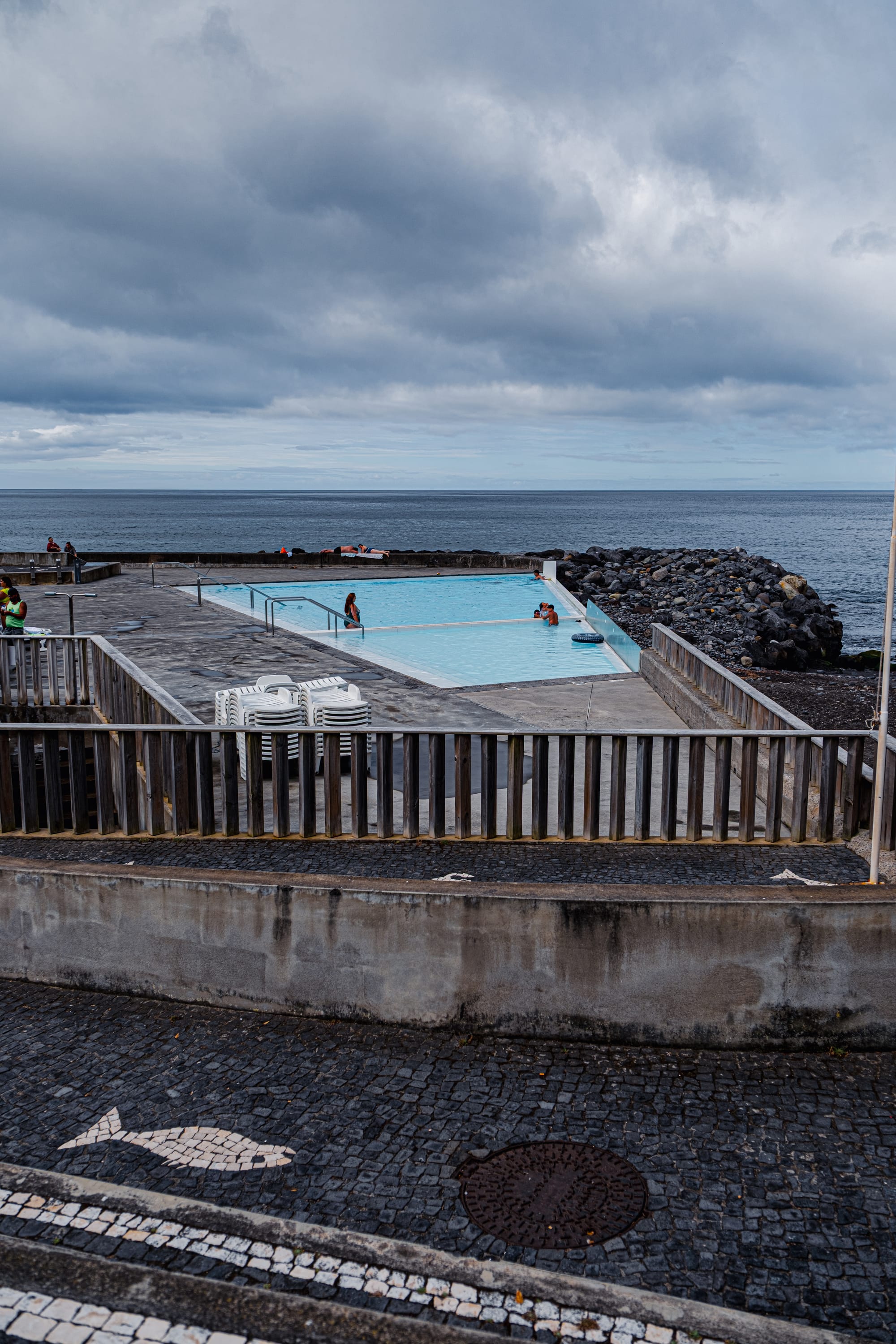
Povoação’s ocean-facing public pool blends into the coastline—used, unadorned, and open to weather, tide, and time
Nearby, the jetty holds steady against the Atlantic. The stone breakwater extends out with puzzle-cut concrete blocks, almost Brutalist in form. Their scale and repetition catch the light differently as the day shifts.
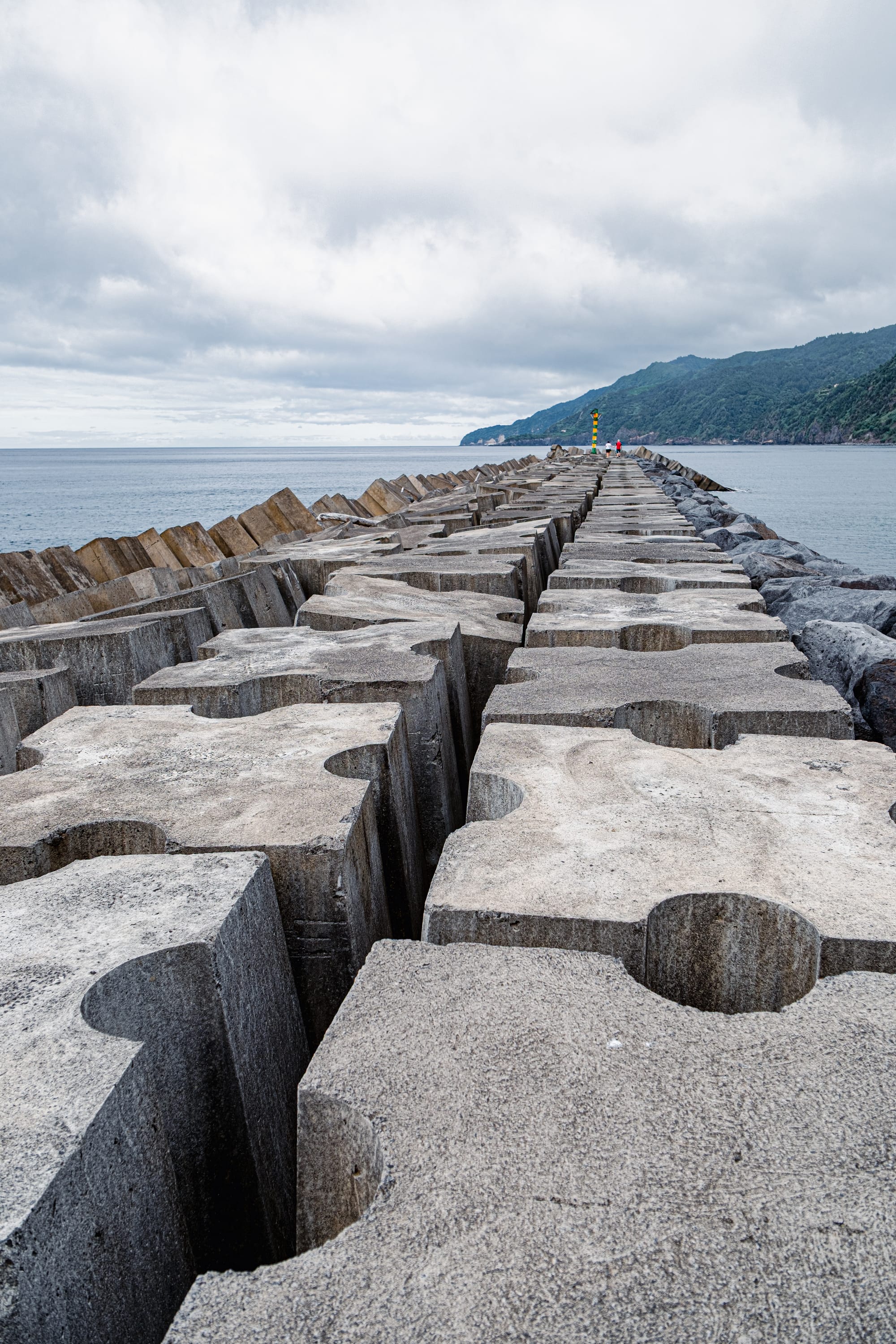
Walking out along this line of stone and poured concrete gives a sense of how the town has always oriented itself—toward the sea, with attention to impact. If you're looking for a unique place to swim in São Miguel, this ocean-facing public pool in Povoação is one of the most distinctive and locally used spots on the island.
A walk through town: texture, rhythm, and routine
Further inland, a mix of restored and weathered buildings give shape to the center. A tiled pastoral sign outside a community building. A crimson door, slightly chipped at the base.
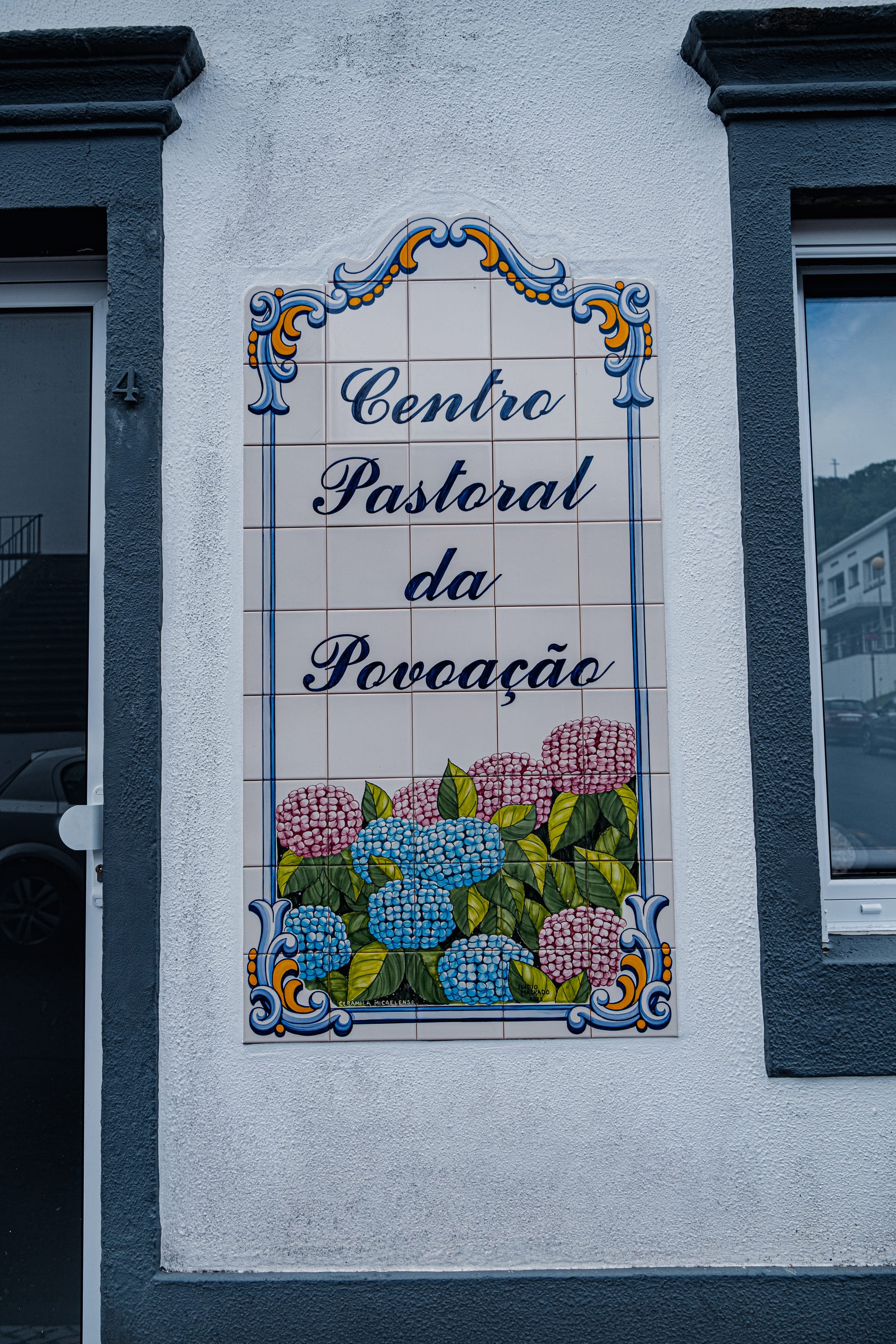

Everyday faith and quiet detail—Povoação’s streets are lined with tiled signs, painted doors, and lived-in color
A church—Igreja Matriz de Nossa Senhora da Mãe de Deus—built in the 19th century, with its black basalt framing, baroque geometry, and crisp white walls.
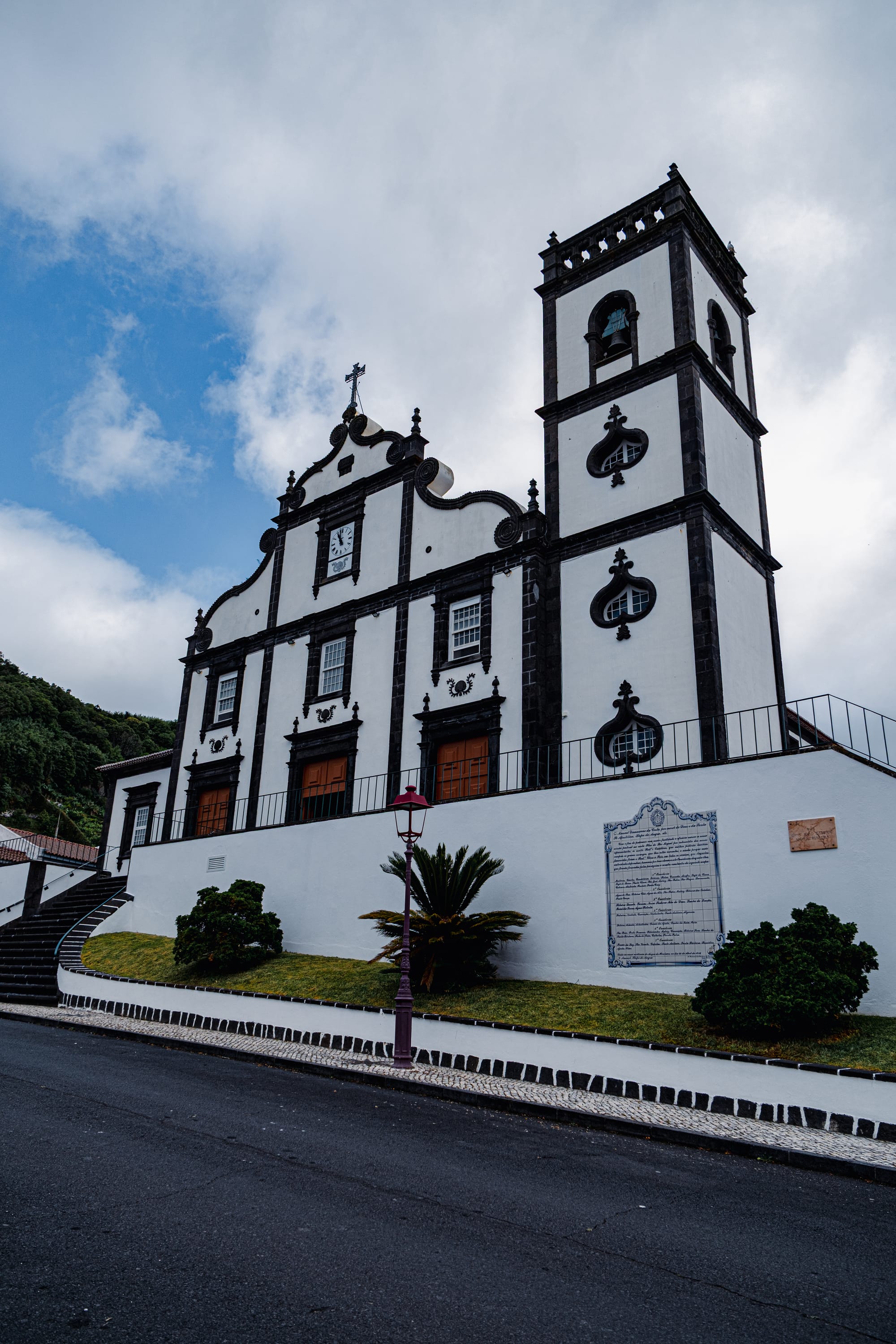
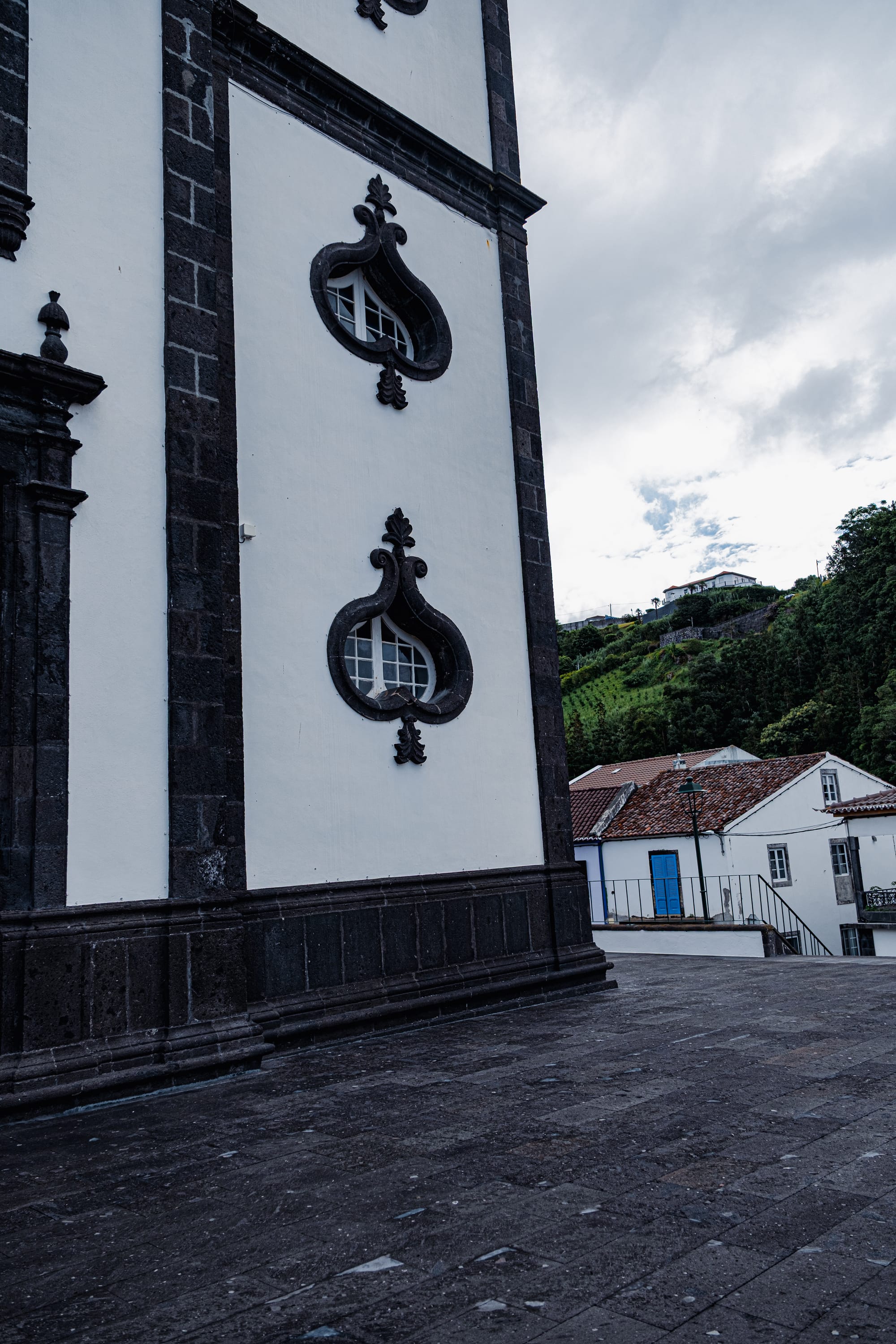
The church stands at the heart of Povoação—baroque lines, basalt framing
Walking through the center of town, the streets are narrow and lined with low buildings in white and pale blue. Occasionally a bright yellow facade breaks through. Sidewalks are tiled in black and white mosaic, sometimes inlaid with small fish or geometric bands.
One tiled alcove shrine is patterned in deep blue, its niche discolored by rain and time, the lower tiles streaked with ochre.
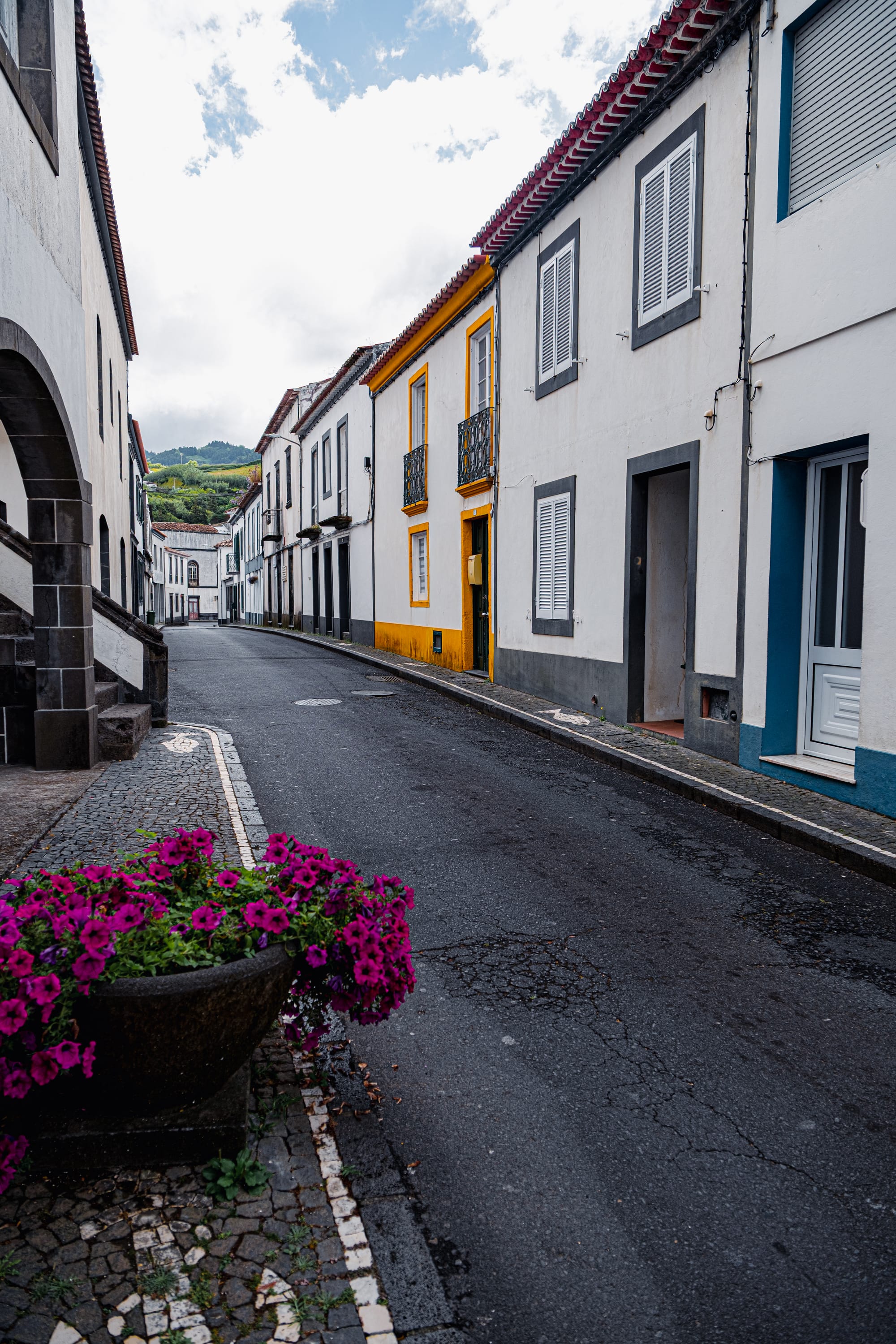
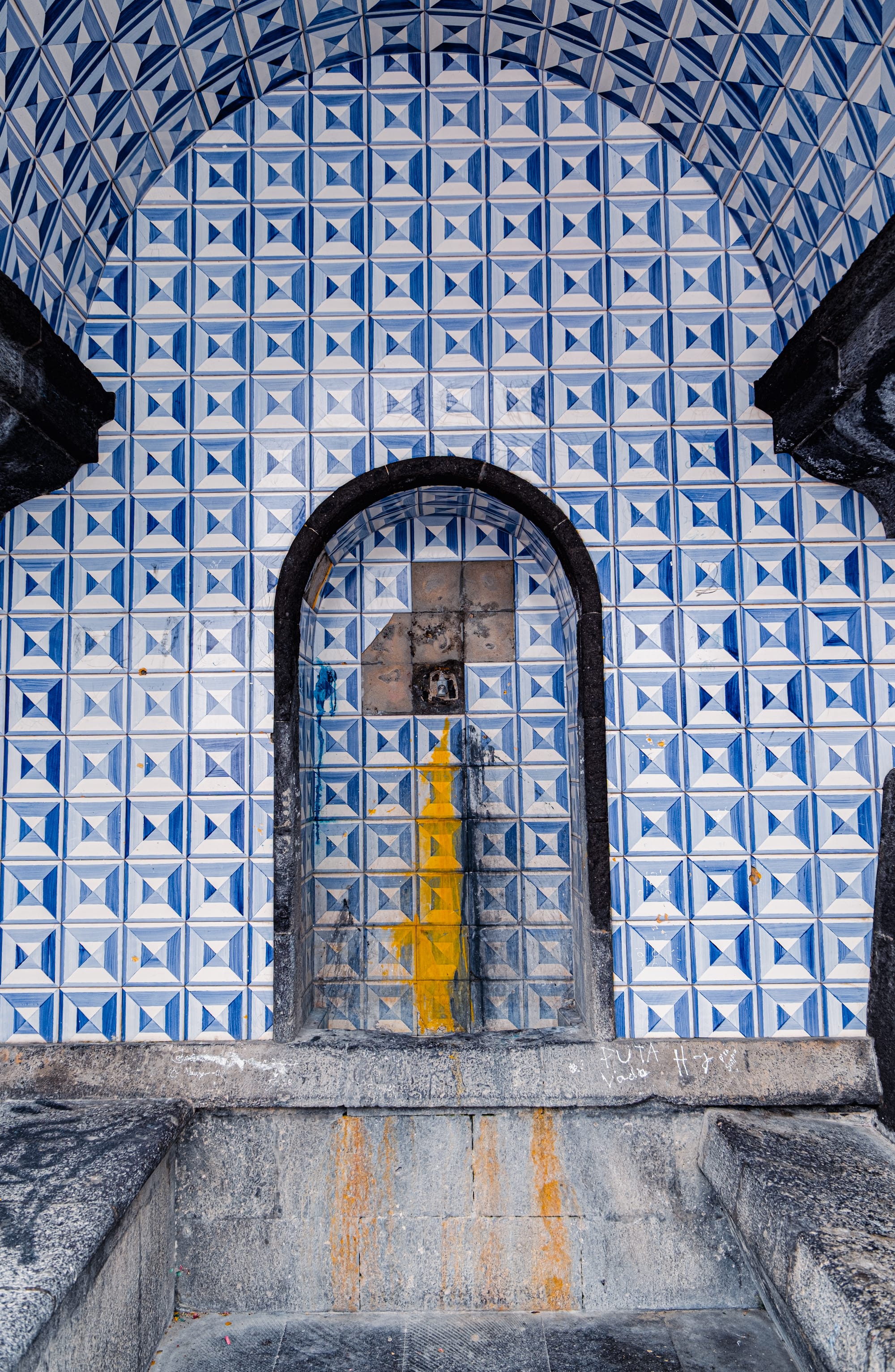
From quiet residential streets to stained azulejo shrines, Povoação reveals its texture in lived surfaces and everyday color
These details aren’t isolated. They’re everywhere—part of the street, not set apart from it. Walking Povoação is a way to experience the textures of Azorean daily life without mediation.
Where work meets worship
You can spend a morning at the small Wheat Museum, tucked just off the main road, where farming tools, threshing methods, and crop histories are recorded with care.
The building is modest, but the context is rich—Povoação’s early economy depended heavily on grain and its movement through the port. The museum is one of several small cultural attractions in Povoação worth visiting if you’re interested in the island’s agricultural history.
Churches and shrines appear throughout the town in quiet frequency. Some are intact and active. Others have half-collapsed roofs but still feature hand-painted saints in tile.
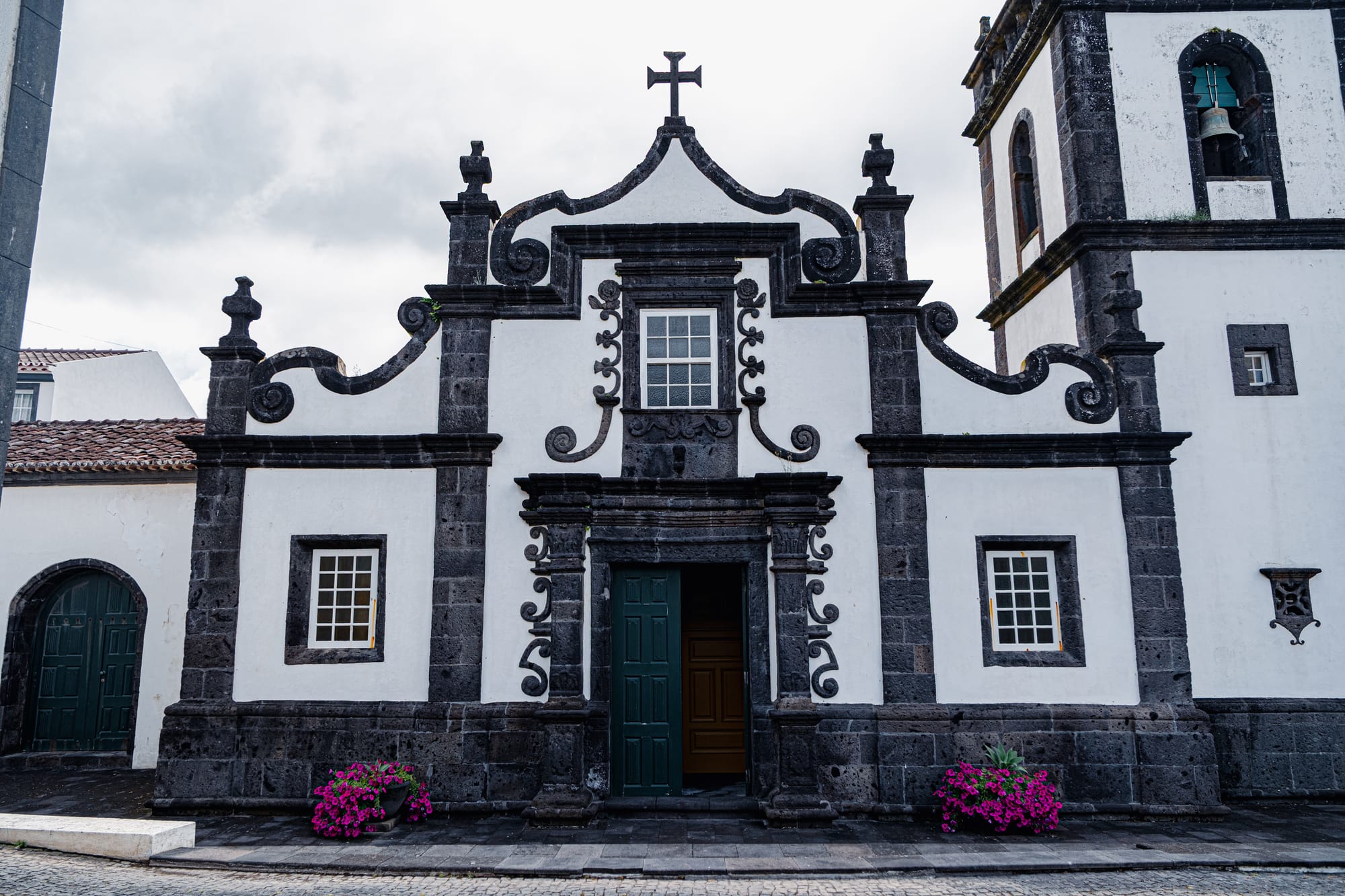
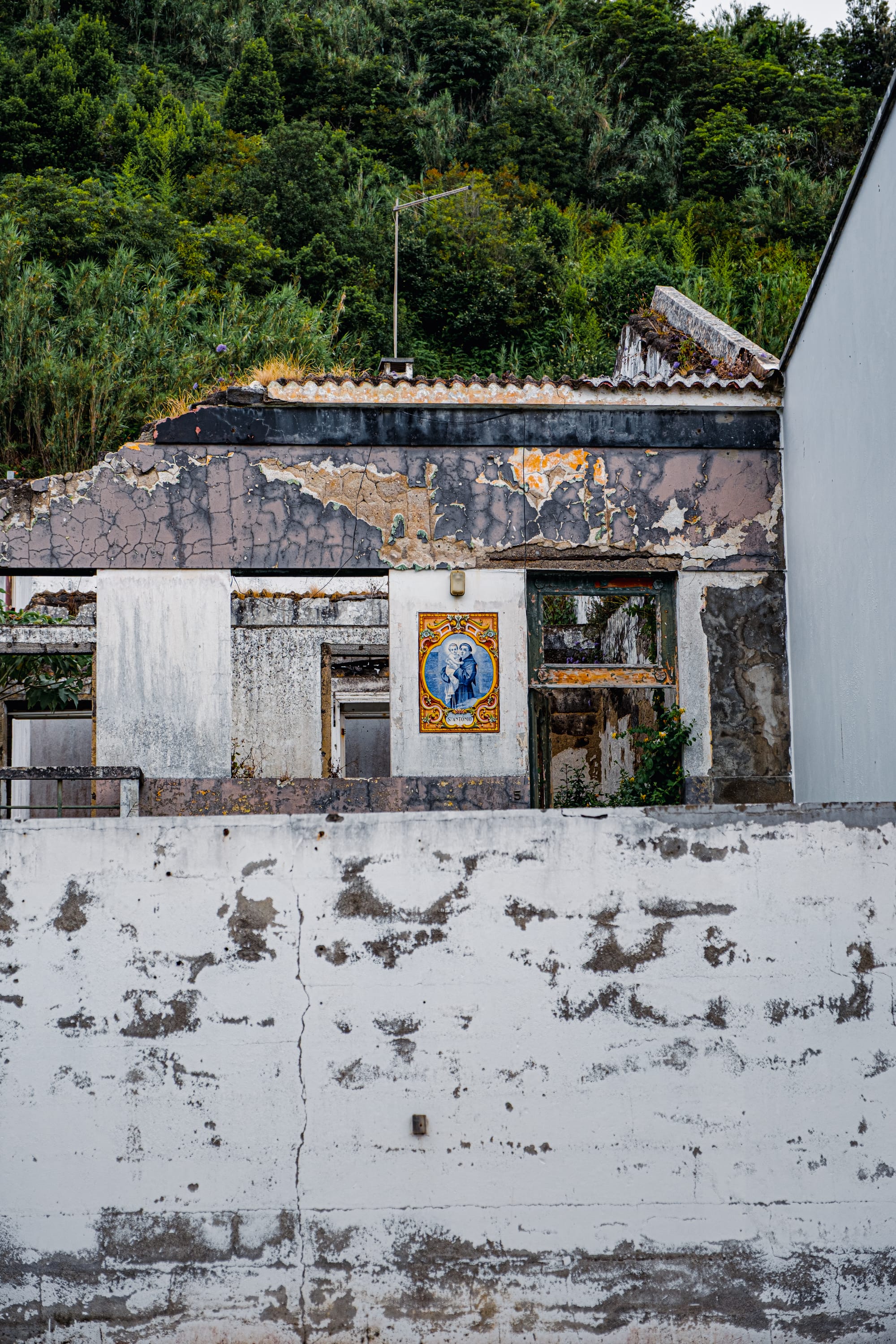
In Povoação, places of devotion range from well-kept churches to roofless walls still bearing painted saints
These devotional sites aren’t destinations—they’re part of the ordinary route.
What to taste, what to notice
At Pastelaria Guida, fofas de Povoação—cream-filled choux pastries—are made fresh and served plain, with sugar dusting. The pastry itself is light and airy, often filled with either vanilla or lemon custard. They are a local specialty, typically eaten with coffee or enjoyed as an afternoon treat.
It’s important to note that fofas de Povoação are not vegan, as they are made with eggs, milk, and often butter. For those curious about local culinary culture, they remain an emblematic example of regional confectionery, and may still be of interest to travelers exploring the island’s food history.
They’re best eaten sitting on a bench by the port wall, watching the sweep of the cove or the movement of a single fisherman checking nets by hand.
The town’s flavor is in the details: a rusted chain half-submerged in grass, the sound of a hose on cobblestone, the tap of a walking stick. Small gardens in front of homes often contain both flowers and tools.
There’s no boundary between beauty and utility here. That’s part of the character.
A working rhythm
There’s no obligation to do anything in particular. You can swim, walk, watch boats come and go. You can follow the slope of a street, find a shrine, or sit beside a rusted chain.
This is what everyday life looks like in a small port town—quiet, active, local.
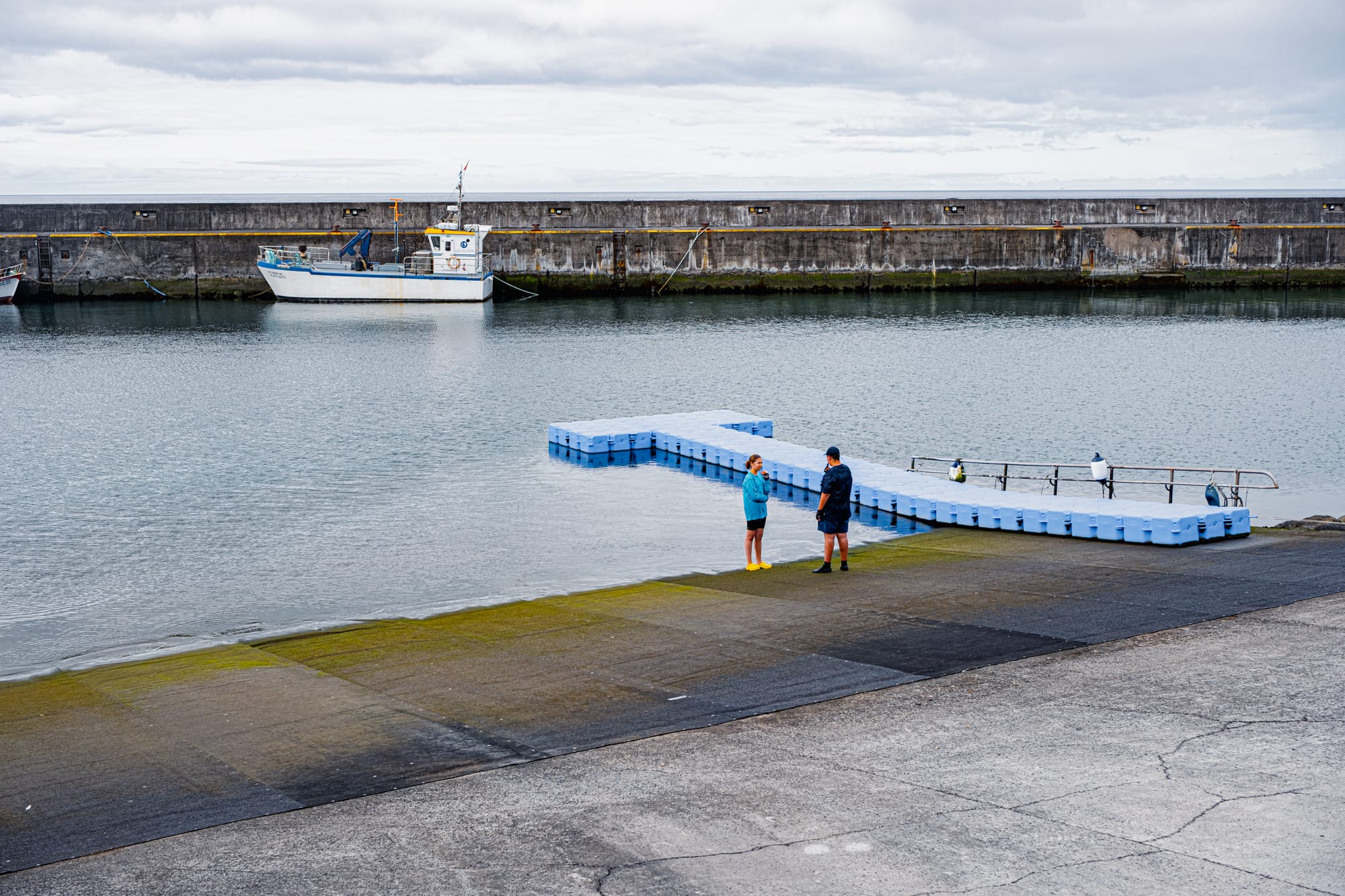
If you want to understand the rhythm of somewhere lived-in, not designed for visitors, this is a good place to start. Povoação is a destination for those interested in experiencing authentic Azorean life along the coast of São Miguel.






